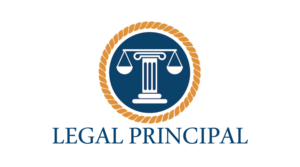Through Part X Bankruptcy Act, the Australian judicial system extends a lifeline to people drowning in debt for those experiencing financial hardship. This legislative provision offers a formal agreement known as a Personal Insolvency Agreement (PIA) as an alternative to filing for bankruptcy. Let’s explore the nuances of Part X Bankruptcy Act and how important it is for guiding people toward financial recovery.
The Prospect of Financial Stability
Part X Bankruptcy Act offers a workable substitute that enables people to recover control over their financial lives without having to file for bankruptcy when financial difficulties seem overwhelming. This clause acknowledges that unforeseen events can cause financial hardship and provides a mechanism for people to deal with their obligations in a systematic and manageable fashion.
Personal Insolvency Agreement (PIA) Part X’s workings
The Personal Insolvency Agreement (PIA), a legal agreement between a debtor and their creditors, is at the center of Part X. This agreement sets forth a proposal to pay back debts over a predetermined time period on terms that work for both parties. Depending on the debtor’s financial capabilities, the PIA may have different components including decreased payments amounts, protracted repayment terms, or a mix of the two.
The Benefits of Part X: A Win-Win Approach
For both debtors and creditors, Part X Bankruptcy Act is intended to be a win-win situation. While pursuing financial stability, debtors have the chance to escape the stigma and long-term effects of bankruptcy. Contrary to bankruptcy procedures, a structured repayment plan benefits creditors by increasing the possibility that they will receive the money they are owed.
Qualifications and Method
A debtor must submit a PIA proposal to their creditors via a Registered Trustee, who serves as the middleman, in order to start the Part X process. A thorough description of the debtor’s financial condition, suggested payback terms, and other relevant facts are all included in this proposal. After that, creditors cast ballots to approve or reject the proposition. The PIA becomes enforceable if the plan is approved by the majority of the creditors, both in terms of quantity and value.
the significance of expert advice
Getting a handle on Part X’s complexities calls for professional guidance. Both debtors and creditors must use the services of a Registered Trustee. Registered Trustees have the expertise and knowledge to make sure the proposal complies with all applicable laws, treats all stakeholders fairly, and has the highest chance of being approved.
Conclusion
The Part X Bankruptcy Act as a ray of hope for people who are drowning in debt. Debtors can create a route toward financial recovery through the Personal Insolvency Agreement (PIA) without taking the dramatic step of declaring bankruptcy. This clause demonstrates Australia’s dedication to providing a reasonable and pragmatic approach to resolving financial difficulties, with special emphasis on cooperation between debtors and creditors. Part X is still a testament to the value of second chances and responsible debt relief even as the legal system develops.

